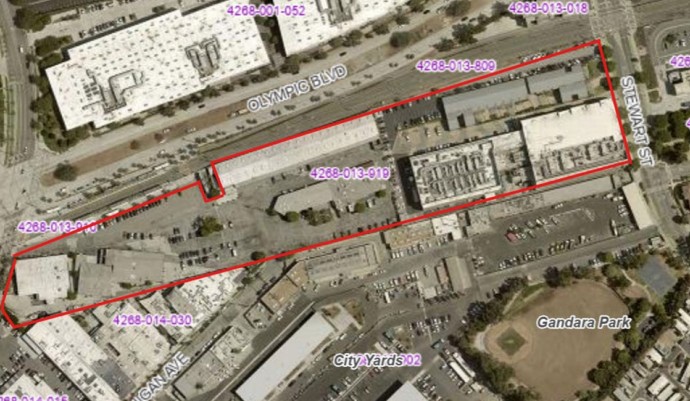
Prior councils have made long term decisions that have locked the city into an extraordinarily fixed path, the consequences of which are only now becoming apparent to all stakeholders. In business, a loosely analogous strategy is called a “Poison Pill.” Poison Pills are generally used to prevent changes. The Council’s decisions made in 2019 and 2020 in reaction to the State’s unchallenged 9,000 housing unit demands have severely constrained Santa Monica’s ability to chart a balanced, realistic and equitable path forward. And, that was the point of those decisions. They were designed to be a Poison Pill.
The prior Council’s key policy response was passive acquiescence to the 9,000 unit allocation and to then let the clock run out on the appeals and objections period, locking all future councils into a straightjacketed liability from which extraction will be very difficult.
Only now are the outcomes of those decisions outcomes being felt. The 500+ unit Gelson’s project and the tentative 4,000-unit Builder’s Remedy projects are only the first, but not the last, examples of the consequences of the legacy Poison Pill decisions.
The Blame Game
Ironically in this election cycle, the groups that have long advocated for this level of development have sought to shift responsibility for city shape-shifting outcomes that they support… to the current Council. Meanwhile, they are arguing vociferously against any opposition to these projects.
According to this line of reasoning, the principal point of culpability by the current Council was its submission of an initial Housing Element to the State back in October of 2021 that was rejected in February of this year. Apparently, the current Council had the temerity to seek balance in submitting a Housing Element that did not disrupt potentially every neighborhood in the city to accommodate the absurd 8,895-unit mandate from the state. In the 197 jurisdictions in the area managed by Southern California Association of Governments (SCAG), Santa Monica ranked #5 in allocated unit density per square mile.
According to the densification-at-any-price advocates, the Council should have simply steamrolled every neighborhood to the extent necessary to create a plan that would have been accepted by the State on initial submission. This would then have eliminated the period of non-compliance that gave developers a window to submit the Density Bonus projects.
Was Santa Monica’s Housing Element rejection an outlier, with the city rightfully singled out for punishment?
Santa Monica was far from unique in the state’s rejection of its initial Housing Element (HE). Out of the 197 SCAG jurisdictions, only six adopted HEs that the state found to be compliant on initial submission. This represented a regional HE submission failure rate of 97%.
The scale of submission failure parallels the unprecedented scale of increase in State mandates on local jurisdictions compared to prior decades of planning. In Santa Monica, the current (6th Cycle) requirement of 8,895 units is at least 5.3x any prior State mandate for the city. The immediately preceding (5th) cycle Santa Monica mandate was 1,674 units.
But we are told that there really was no basis to challenge the State mandate numbers. We are told that they were rigorously developed, within an objective process.
Is that narrative correct? The evidence indicates that it is not. And, if these numbers were not rigorously developed, then on what basis could the prior council objected?
Reversing the decades-old jobs-housing regional relationship without any grounded underlying rationale, comprehensive plan or defined benefit(s) justifying such upheaval should have been Red Flag #1.
How could such a radical upscaling of housing requirements, during a period of declining state population, be relevant on a city-by-city basis? Housing’s regional nature is even captured in the name of the process… the Regional Housing Needs Allocation (RHNA). While we would like to live where we work, we work where we can find the jobs we want and we change jobs based on how we can best advance our careers. Housing simply needs to be approximate. And, according to the US Labor department, the types of jobs associated with hospitality, which is significant in Santa Monica, have the highest turnover, with an average tenure of only 1.6 years.
In addition, with Santa Monica’s 70% affordable housing requirement embedded in the 8,895-unit mandate, the expectation would be that this regional issue that would result in Los Angeles ringing Santa Monica with affordable housing. Los Angeles has located its major affordable housing overlay 20 miles away in the Valley.
The demonstration of overwhelming subjectivity should have been Red Flag #2.
The clearest evidence that the process was prone to high degrees of subjectivity and manipulation, and therefore lobbyist influence, was during the drafting process for the latest allocations.
In the span of 4 weeks, from October 2, 2019 to November 4, 2019, the allocation to Santa Monica was almost doubled, from 4,829 units to 9,058 units, an increase of 4,229 units (88%). This was part of larger shift of unit allocations across various jurisdictions, removing units from affordable areas of Southern California and locating them in more expensive developed areas. While this starkly acknowledged the regional aspect of housing, no objective, disciplined, data-driven process would have created such drastic outcome changes in such a short amount of time.
Of course, this massive change was not the result of such a process. It was the direct result of lobbying by Abundant Housing LA (AHLA) via a legal letter to SCAG on October 11, 2019 “urging” SCAG to “…adopt a new methodology without “local inputs” that is compliant and achieves the stated goal of achieving socioeconomic equity with special attention to the needs of lower-income residents.” Apparently, all the modeling and analysis that had been completed by SCAG did not meet SCAG’s own objectives.
But the influence did not end there. At the December 10, 2019 Santa Monica Council meeting, the AHLA director informed the City councilmembers that, should the Council oppose the draft 9,058 allocation, AHLA would push SCAG to assign to Santa Monica a total of 14,155 units, justified by a different spreadsheet modeling exercise done in conjunction with a representative of UCLA’s Luskin School of Public Affairs. As everyone who builds models knows, models can be constructed to generate any desired outcome.
The complete absence of any outcomes, other than building units, should have been Red Flag #3.
Interestingly, despite all the discussions of unit allocations, models and mandates, there was no indication of any expected outcomes…other than building “units.” If the targets were met, were we done? How much should we see affordability increase? What was the cost of the regionally-driven affordable housing allocation to Santa Monica, and who should bear that cost? What level of rent and house purchase price moderation should be expected from overturning decades of city planning? What level of added congestion would all this development create? What increase in services would this require and how was that going to be paid for? And, most importantly, was the tradeoff worth it the outcomes?
Complete inadequacy of basic data used by SCAG should have been Red Flag #4.
But if AHLA could get into modeling minutia, why did the City not do similar levels of due diligence to satisfy itself (and the residents it represents) that it was signing up for equitable and well thought out requirements that required radically transforming the entire City?
But, if the City wanted to conduct such a due diligence audit, where would it start?
Helpfully, SCAG included the detailed allocation Excel models as publicly available materials contemporaneously with the discussions. These models had the allocation parameters and appendices listing all the data sources.
Had the city done its homework, it would have discovered that the model included 453 data points of which 319 (70%) were sourced from the American Community Survey (ACS), an annual Census department sampling exercise. Some of these estimates were from the 2012-2016 period (up to 10 years old).
In addition to the data being stale, a slight bit of online research would have uncovered a 2014 analysis of ACS accuracy by the National Library of Medicine (NLM), a division of the National Institutes of Health. The NLM concluded that this data was highly flawed, beginning with the fact that response rates for the survey were around 65% around the time of the analysis. In addition, the report noted that:
“…the amount of uncertainty in the ACS has far exceeded the United States Census Bureau’s (USCB hereinafter) expectations.”
“…the ACS margins of error are so large that for many variables at the census tract and block group scales the estimates fail to meet even the loosest standards of data quality.”
“…ACS small area estimates are plagued by attribute uncertainty. For some variables the uncertainty (margin of error) is so large that the data are difficult to use.”
Interestingly, the ACS data was (and is) used in all the city’s housing analyses and was the sole underlying source of data supporting Measure GS. None of it has been sanity-checked to any actual available real-world data in the city.
The reliance on an inclusionary strategy to generate affordable housing production in the absence of any State funding should have been Red Flag #5
The inclusionary approach, combined with the minimal required inclusionary rates (Gelson’s is 10%) results in massive market rate development far beyond the amount included in the 8,895-unit mandate. A 20% inclusionary rate on all projects would generate total production exceeding 30,000 units, making clear that market rate development was the real objective. The final approved Housing Element contains capacity for 13,600 units.
The scale of funding requirements for these subjectively-defined affordable targets runs into the multiple billions of dollars, expected in an eight-year RHNA timeframe. Since there are no fixed objectives, there are no fixed terminal quantities since there will be endless RHNA cycles after the current 6th Cycle ends in 2029.
If the unsupported state mandated unit assumptions are not challenged, Measure GS may be only the beginning, not the end. With taxes used exclusively for production, additional revenues will have to be found to fund increased services demand and open space maintenance. And, increased congestion and attendant pollution cannot be funded away.
The fallacy of the entire unrealistic transit assumptions should have been Red Flag #6.
Had staff been inclined to look at the allocation methodology, they would have found that 7,902 units (87% of the draft total 9,058) were based on relocating existing residents of Southern California (“existing need”) to Santa Monica. This was based solely on the presence of “high quality transit areas (HQTA).” HQTAs are defined by the state as “…a walkable transit village or corridor, within one. half-mile of a well-serviced transit stop or a transit corridor with 15-minute or better service.”
Staff would have had difficulty assessing the basic transit bus route utilization within the city since neither unique users nor measures of actual route miles within the city boundaries are maintained.
If staff had used the LA’s Metro Bus line’s 2019 strategic plan as a proxy for service performance targeting, it would have referenced Metro’s goal of “…no more than 2.5x slower than driving.” The need for timely transit for providing job (or multiple job) access across transit lines would clearly not be supported.
Another available data proxy is the BBB’s MODE program in place since 2017, where Lyft is contracted to provide last-mile connectivity for the disabled and for seniors. This limited service is, of course, acknowledgement that bus service is not adequate for large segments of the population, including families with young children and ongoing shopping requirements.
Missed Opportunities, by Design
The prior Council did not task the staff with a fact-finding role to audit the proposed allocations to the city. And, through the thousands of pages of staff output on the topic, none of these fundamental issues were raised.
Had due diligence been performed based on these six red flags, Santa Monica would have had a solid basis for coalition with other cities and negotiation with the state. Santa Monica’s stature would have garnered significant attention and support across the region. It could have demanded to know what outcomes, besides building units, the state’s programs were supposed to deliver, and demand that those outcomes be justified.
Instead, the City chose to commit the community to the absurd housing unit deliverables, with no idea of the costs or tradeoffs. And the city staff defaulted into the role of state enforcer, which continues to this day.
Managing the Aftermath
The current Council, in trying to ameliorate the side effects of these purposely negligent legacy decisions, will invariably test and discover the real limits of the state process, if for no other reason than the specifics of the applicable law are not settled in many areas, including Builder’s Remedy. Moreover, the entire idea that cities can be punished by the State for something they are not in the business of doing, which is building housing, will be tested. Finally, the abject political nature of the haphazard state RHNA construct, devoid of any fundamental economic rationale, is at high risk of imploding across the state over time.
The current situation we find ourselves in reflects the decisions of a staff and a prior Council that have been either unprepared or unequipped (or both) to manage the increasingly complex and rapidly evolving relationship with the State. The State’s only goal was to abolish local development control and to appear to be doing something about escalating housing costs, which reflect multiple local and global economic issues unrelated to a simple supply strategy. Translation of this open-ended politically-driven policy agenda into actual policy tools has revealed a host of expedient shortcuts and subjective decisions that, taken as a whole, severely compromise the integrity of the entire narrative.
Complacency and passive acquiescence of these highly flawed “mandates” can only guarantee significant dislocation within the city with no benefit.
Going forward, the resident and commercial stakeholders in this city will need to become much more vocal about demanding accountability from both elected and professional staff to serve the equitable interests of the city’s resident and business stakeholders.
By Marc Verville for S.M.a.r.t (Santa Monica Architects for a Responsible Tomorrow)
Thane Roberts, Architect, Robert H. Taylor AIA, Ron Goldman FAIA, Architect, Dan Jansenson, Architect & Building and Fire-Life Safety Commission, Samuel Tolkin Architect & Planning Commissioner, Mario Fonda-Bonardi AIA & Planning Commissioner, Marc Verville
M.B.A, CPA (Inactive), Michael Jolly, AIR-CRE.
For previous articles see www.santamonicaarch.wordpress.com/writing























